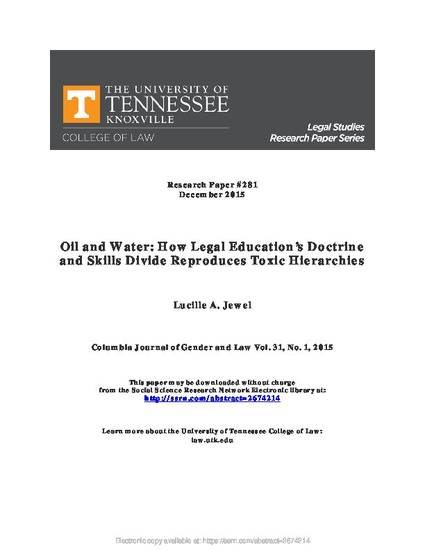
The longstanding categorical distinction that elevates doctrinal teaching over skills teaching continues to harm the profession of law. In this Article, I consider two distinct effects produced by the doctrine/skills dichotomy. First, the dichotomy is responsible for reinforcing class, gender, and race segmentation in legal education, which limits the quality of instruction that law schools can provide and abets the reproduction of existing power relations in the legal profession and society at large.
Second, the antipodal positioning of doctrine and theory over skills and practice harms law schools’ ability to prepare a new generation of law students to engage in both critical lawyering and law reform. As American society becomes increasingly unequal and as its criminal justice system barrels well past the breaking point, we desperately need the next generation of law students to participate in a new era of structural law reform. But unlike the last major era of reform in the United States (the Progressive Era), where ill-conceived top-down solutions were theorized and implemented by a small subset of elite lawyers, this time, reform should emerge from a coalition of lawyers hailing from all law schools and all levels of society. Even in legal education’s current situation, with tenure for law professors on the chopping block due to declining student enrollment and legal employment prospects, law schools should commit to collapsing the false binary between doctrine and skills.
